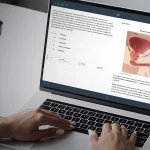It is often said that working in the medical field requires a calling because it is one of the most rigorous and highly specialized fields in the world. But most people tend to limit their thinking about careers in healthcare to medical doctors (physicians) and nurses. However, that’s not the full scope of what opportunities exist for aspiring medical professionals. Some people, for various reasons, decide to foray into healthcare by becoming a physician assistant (PA) instead.
The demand for PAs
The demand for the services of PAs continues to grow. According to the NCCPA’s 2020 Statistical Profile of Certified Physician Assistants, the rate of certified PAs per 100,000 population increased from 36 to 45 from 2016-2020. This growth correlates to an increase in compensation for PA services, with the mean salary for certified PAs reported to have increased 10.9% over that period to $115,470.
With the outlook for PAs more promising than ever, a growing number of undergraduate students interested in healthcare are turning to the PA profession. By all accounts, there has arguably never been a better time to join the PA profession. Still, before we vision cast you enjoying a fulfilling career as a PA, we must first answer one fundamental question: what does a PA do?
The work of a PA
A PA is a medical professional who works under the supervision of a physician. While the definition of “supervision” can be subjective and varies from one state to another, PAs must perform their duties under the direction of a physician. This means they cannot have an independent practice of their own.
Many aspiring PAs often wonder if a doctor must always be onsite while they practice, effectively micromanaging them throughout their career. While it is true that PAs must work under the supervision of a physician, this could be direct or indirect. The doctor may also be off-site. Most states permit this dynamic as long as the PA has access to the doctor as needed. The prevailing understanding is that it is the supervising physician’s discretion to determine what functions the PA can and cannot perform.
Besides other factors, decisions about what career path in healthcare to pursue are often personal. Still, with the increasing popularity of the PA profession, evidence suggests that now is a good time for aspiring healthcare professionals to consider becoming PAs. If you find yourself deliberating that decision, check out the top 10 reasons why PAs were number one among American healthcare jobs in 2021. Perhaps one or more of these reasons might be just what you are looking for to choose to become a physician assistant.
References
2020 – nccpa.net. (n.d.). Retrieved December 15, 2021, from https://www.nccpa.net/wp-content/uploads/2021/07/Statistical-Profile-of-Certified-PAs-2020.pdf




